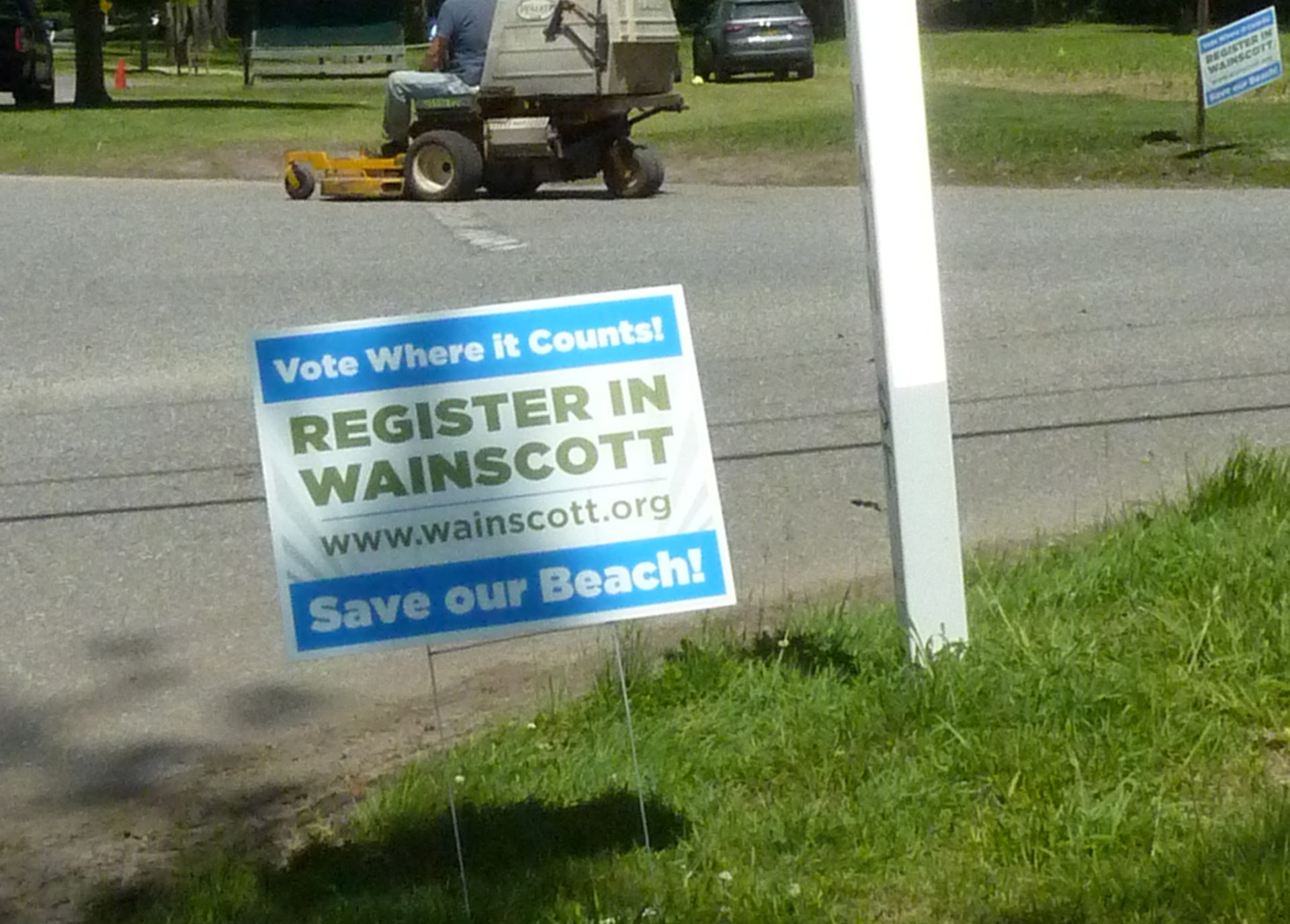Both Sides Plan To Flood PSC Proceedings

The New York State Public Service Commission hosted an informational meeting in East Hampton on Tuesday, June 11, and as of press time it appeared attendees would be fighting for seats at the East Hampton Emergency Services Center on Cedar Street,
That’s because the matter on the table, the South Fork Wind farm, has become one of the most contentious in years.
Opponents of the project advanced by Deepwater Wind, which has since been sold to international energy giant Ørsted, include Wainscott residents and fishing enthusiasts.
They are pitted against environmentalists who believe the energy generated by wind farms will allow the state, and eventually the country, to free itself from dependence on fossil fuels.
A group of citizens identified as Citizens for the Conservation of Wainscott have launched an ambitious and expensive campaign to stop the wind cable from being brought ashore in Wainscott and to get hamlet property owners to register and vote in East Hampton Town — there is a significant number who own second homes here who vote in the city.
The town Democratic Party, which currently holds a 5-0 majority on the town board, is unabashedly pro-Deepwater. Wind farm critics hope a slate of reform candidates opposed to the wind farm will be voted in.
Opponents have been taking out full-page ads in the papers urging Ørsted not to use Beach Lane in Wainscott as a landing site for its offshore cable but instead choose the second of two options: bringing the cable to shore on state-owned land in Napeague. The group has also peppered virtually every street in the hamlet with signs urging homeowners to register to vote there.
The Sierra Club has taken up the banner for the South Fork Wind project, writing a “personal message” supporting the project on its website that is e-mailed to the PSC to go on the permanent record of its Deepwater review. Proponents need only sign it — so far almost 1000 comments have been submitted. “As a New Yorker and a supporter of renewable energy, I am writing to urge the Public Service Commission to move forward expeditiously on the permitting process to ensure New York’s first offshore wind farm gets built,” it reads in part.
Ørsted, apparently concerned about the adverse publicity, reportedly wrote a letter to the Wainscott group, asking for support of the project should the cable landing be switched from Wainscott to Napeague. The wind company declined to release a copy of the letter the day before the public meeting: “We’re going to decline to share the letter . . . We don’t think it’s appropriate for us to share, as it is a private letter,” wrote Meaghan Wims, a spokeswoman for Ørsted.
“Our South Fork Wind Farm project plans and permitting efforts remain unchanged and on-schedule. We continue to have constructive dialogue with all project stakeholders, including the East Hampton community, regarding the cable route options identified in our permit applications,” Wims added.
Simon Kinsella, a Wainscott resident and vociferous Deepwater critic, noted that Ørsted decided not to conduct test borings in Wainscott and used that as an indication it is considering a Napeague landing. “I don’t think it means anything. Nothing has changed,” he said. Kinsella added that Ørsted was probably trying to tamp down public criticism at the meeting while at the same time getting its supporters to take up the majority of allowable spots during the public hearing. “They will line them up and feed them cookies. It will be like a little circus,” he said.
Before the meeting, Kinsella held his own press conference to announce a suit that will force LIPA to reveal the price it agreed to pay for electricity generated by the South Fork Wind farm. “That price will be passed along to consumers if the South Fork Wind Farm comes online as scheduled sometime in 2022,” the suit notes.
All of the players associated with the wind farm — LIPA, PSEG, Deepwater, and Ørsted — have refused to divulge the price agreed to, but LIPA has contractually agreed to buy all the electricity produced by the wind generators and there are built-in annual price increases throughout the length of the contract. Critics contend the rate charged could be as much as triple the going rate.
The nation’s only functioning wind farm, a Deepwater project off Block Island in Rhode Island is under scrutiny because of a persistent problem keeping the electric cable buried that critics fear will present itself in East Hampton. “The power line from the five-turbine Block Island Wind Farm reaches shore at Fred Benson Town Beach and leaves the island for Narragansett at Crescent Beach to the north. But keeping portions of the cable buried at Crescent Beach has been a struggle,” wrote Tim Faulkner for ecoRI.
The problem has persisted since 2016. National Grid and Ørsted say shifting sand has made the cable prone to exposure. National Grid and Ørsted are now working with the Coastal Resources Management Council to fix the problem for good.
rmurphy@indyeastend.com



